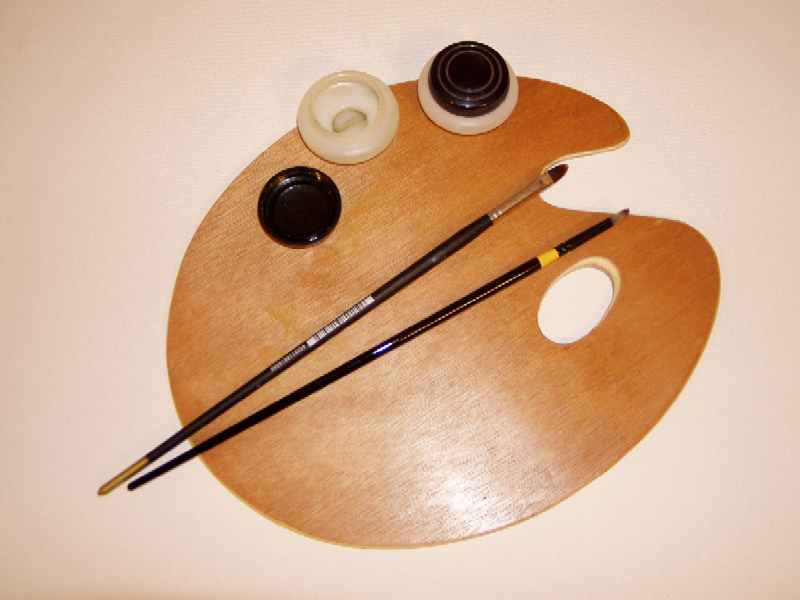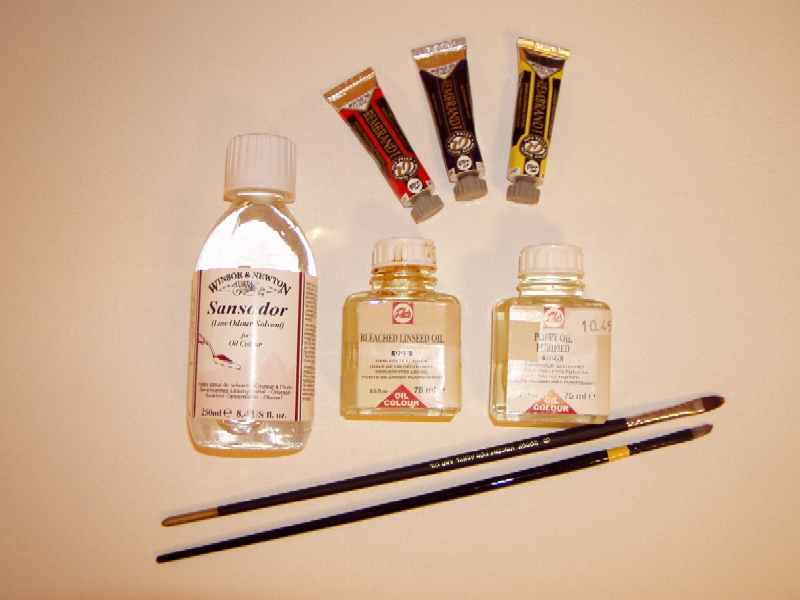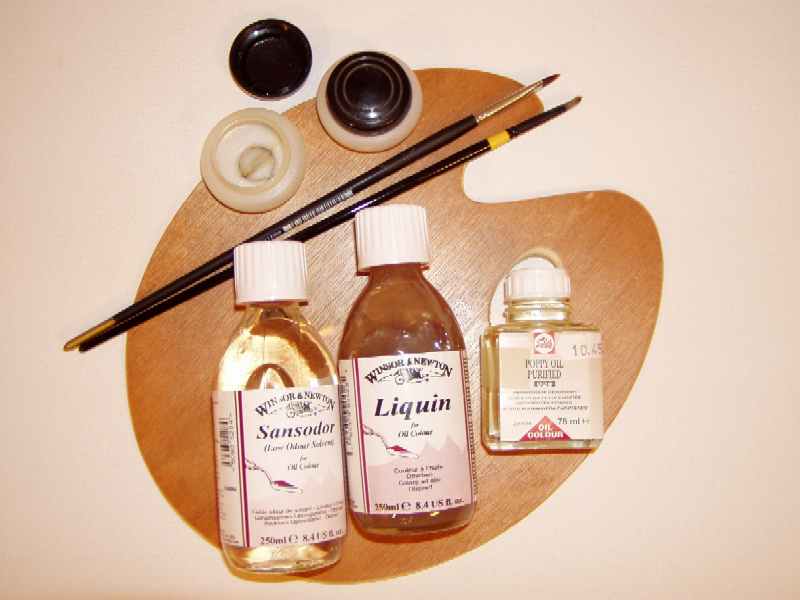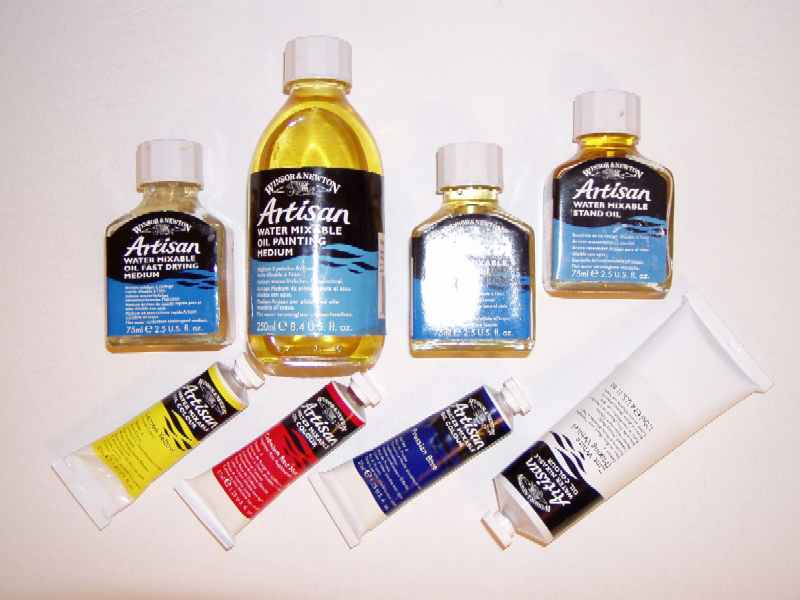|
Making your medium leaner or fatter is necessary for the principle of "Fat over lean". This is one of the most important principles when building up an oil painting. The idea is to make each subsequent paint layer slightly fatter than the underlying layer. You generally start with a lean layer, where you make the paint flow better by adding a solvent. The next layer should be slightly fatter, so you add less solvent and some oil. The layer after that should have even more oil added. Oil is the element that makes the paint flexible. By applying the fat over lean principle, you ensure that each subsequent layer is more flexible. If you were to do it the other way around, you risk cracks because you're applying a less flexible paint over a more flexible layer. Along with this principle, you need to ensure that each subsequent layer dries slightly slower. Oil dries slower than solvent, so if you use the same oil every time, this will naturally work. It's also possible to use different types of oils with different drying times. Pay close attention to the order in which you use the oils. The drying speed of oils from fast to slow is approximately:
This overview includes only the most commonly used oils from the brands Talens and Winsor & Newton. Of course, there are more brands with their own specific oils. If you want to use these, make sure to get well-informed about the drying speed of the oils or check the manufacturer's website. Generally, it's handy to use two palette cups when working with oil paint. In the first cup, you put some solvent for cleaning your brush, and in the other cup, you put the mixture you use as a painting medium. Adjust the latter mixture each time, making it slightly fatter and slightly slower drying for each subsequent layer. Some possibilities for painting mediums when working in layers are given here. Always start with number 1 and finish the final layer with the composition mentioned at the last number. |
Welcome at To be defined
| Welcome at To be defined, a website filled with creativity. Here you will find numerous manuals in words and images on various subjects. On this page you can only see a selection. Choose from the menu on the left for more articles on your favorite topic. |








